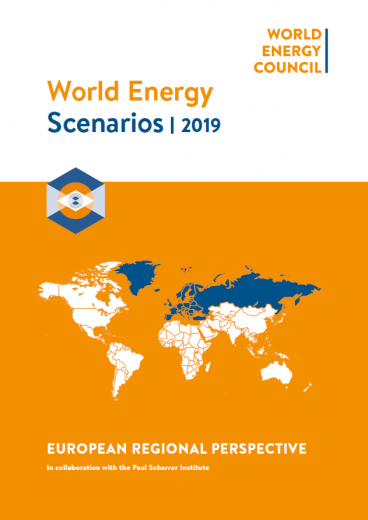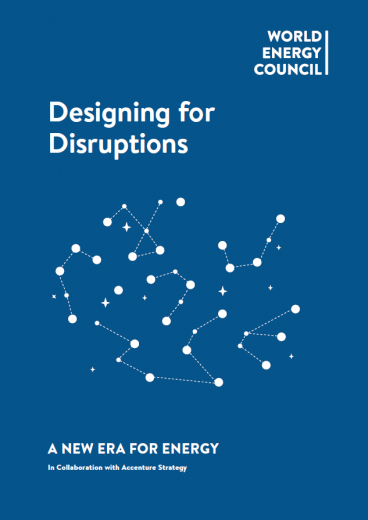Expert Views: climate action requires creative maneuvering
AUTHOR: Dr. Angela Wilkinson, Secretary General and CEO, World Energy Council
In May 2018 the world passed the atmospheric threshold of 450ppmv for carbon dioxide. Annual global emissions are again increasing and even with new policies the world is heading for an above 3 degrees celcius global average temperature increase by 2050. Reducing global warming without enabling all the available resources for energy transition is an unrealistic vision, an empty political promise and, at worse, an ideological trap.
A movement is growing in influence in social media that claims (actually demands) that 100% renewables electrification is the only way to go. If you say anything to the contrary, you are deemed a mouthpiece for the fossil fuel industry, or you are accused of wanting to save the incumbent utilities and the old model of centralized generation. But this is simply not true! Whilst in some cases it stems from a lack of understanding of how energy is used, supplied and produced – in other cases it is mischievous – the equivalent of fake energy news!

Clearly some governments are responding to the increasing social pressure and urgency of the challenge by increasing their national ambitions with new climate neutrality targets. In Europe, Finland, UK and Germany are notable examples of raising the aspirational bar. The European Union is also seeking to maintain a global leadership position in sustainable development through a New Green Deal. Russia has signed up to the Paris Accord. And even though the federal government in the USA has withdrawn, individual states and cities are transforming their energy systems in response to the new economics of renewable power generation and responsibility to future generations. Even oil-rich Texas has achieved an impressive 50% greening of its energy supply mix.
Even so, not everything that is green is rosy. The gap between human ambition and effective responses is increasing. And the narrow ideological position of 100% renewable electrification as the ONLY way to achieve climate neutrality by 2070, never mind 2030, is not in the interests of whole societies. Counter-intuitively, it may harm the efforts achieving the global goal of a safe limit in global average temperature increase – usually expressed as less that 2 °C and even 1.5 °C.
The IPCC 1.5 °C report advises the world that we shouldn’t dismiss any decarbonization solution outright—not only because we need faster decarbonization of hydrocarbons, but to enable deeper and more affordable decarbonization and build a future that is socially cohesive, environmentally sustainable and economically vibrant. To be successful, we need to manage energy security, energy equity and affordability and environmental sustainability as we learn how to accelerate the pace of whole energy systems transition.

There is broad alignment in new energy visions of the hope of enabling the flow of sustainable, reliable and affordable energy to everyone, anywhere and anytime – it is THE key to a next era of human-centric progress. How we get there is where we disagree. More degrees of freedom are essential and key to engaging diversity in the direction of a common goal: national circumstance and regional energy systems are different - there is no ‘one size fits all’ pathway.
So how can we keep more options on the table to decarbonize the economy at a global level? And how can we better engage the diversity of responses and still learn with and from each other?
A few things to consider:
- Don’t let perfection (ideology) become the enemy of the faster, deeper and social affordability decarbonization. Use all available clean heat, clean electrons and clean molecules options. There is no need to reinvent the wheel - leverage technology and policy innovation by encouraging countries to learn with and from each other and increase the pace of learning by doing.
- We need to decarbonize hydrocarbons and include net zero pathway options – which involves a role for CCS and direct carbon removal technologies. We can also do more to address methane emissions from gas production and flaring. However, we can’t rely only on accelerating the pace of electrification. Clean heat and clean liquids are also required. Only 20% of energy end uses are electrified at present and we don’t yet know how to electrify freight transport, aviation or industrial heat.
- Remember energy transition is not a single issue – manage the connected challenges of energy security, energy equity and affordability and environmental sustainability.
- Energy transition is a challenge for all sectors of the economy. We must not only reach across the energy sector, we also need to include new and non-traditional actors and other sectors at the energy transition talks table. Silo-by-silo is too slow. Sector coupling strategies can identify new and better solutions spaces.
- We cannot regulate our way through a successful global energy transition. Policy coherence involves people coherence - ministries working together towards integrated policy pathfinding.
- We have entered an era of new people power; how can we engage active energy customers and enable billions of people around the world to evolve their energy behaviors to lower their personal, household and professional carbon footprint?
- Let’s also not forget that even if we make it to 2oC, evidence of climate change impact is already increasing. We need to make time to talk about climate adaptation now if we are to prepare new energy systems for the future.
The World Energy Council is already a truly global energy organization with member committees in nearly 90 developing and developed countries. We are persistent – new visions cannot be achieved all at once, inspiration must be matched by perspiration! We are not an advocacy organization – we are the ‘how to’ platform. We are finding ways to run-the-talk by moving bolder and wiser together!
We can only avoid a climate crisis by keeping all options open.








